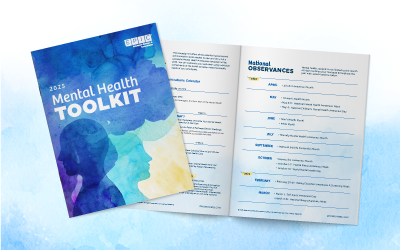Quick Facts
- On November 10, 2021, the Internal Revenue Service (IRS) released updated flexible spending account (FSA) and qualified transportation limits for 2022.
- The FSA limits are increasing in 2022 to $2,850 per year, up from $2,750 in 2021.
- The qualified transportation limits are increasing in 2022 to $280 per month for parking and $280 per month for transit, both limits up from $270 per month in 2021.
Background
In Revenue Procedure 2021-45, the IRS sets forth a variety of 2022 adjusted tax limits. Among other things, the notice indicates that employee contribution limits toward health flexible spending arrangements also known as flexible spending accounts, or FSAs, and qualified transportation fringe benefits will increase slightly for 2022. The limit on annual employee contributions toward health FSAs for 2022 is $2,850, up from $2,750 in 2021 with the ability to carry over up to $570, up from $550 in 2021. The limit on monthly contributions toward qualified transportation and parking benefits for 2022 is increased to $280, up from $270 in 2021.
Health Flexible Spending Arrangements
The annual contribution limit of $2,850 for health FSAs applies specifically to employee contributions: The same limit applies for general-purpose and limited-purpose health FSAs. Employer contributions are not subject to the limit but are subject to different restrictions under healthcare reform rules.
Employee Health FSA Contributions
Employee contributions subject to the $2,850 annual limit include:
- Amounts deducted pre-tax from an employee’s compensation through a cafeteria plan; and
- Employer flex credits that the employee has the option to use toward cash or other taxable benefits.
Employees may elect up to $2,850 even if they’ve carried over up to $550 from the previous plan year. In addition, employees who join mid-plan year may still elect up to $2,850 for the remainder of the plan year. The limit applies per employee, rather than on a household basis, so if both spouses are employed and eligible for health FSA coverage, each spouse could contribute up to $2,850 for 2022. Finally, the limit applies on a per employer basis so long as the two employers are unrelated (i.e., not part of a controlled group or affiliated service group due to common ownership or shared services). In other words, an individual eligible for a health FSA under two separate employers, whether simultaneously or at different times during the same plan year, may elect up to $2,850 under each employer’s health FSA so long as the two employers are not part of a controlled group or affiliated service group.
Employer Health FSA Contributions
Employer contributions may be made in addition to the $2,850 allowed for employee contributions. However, a health FSA must meet “excepted benefit” status to avoid violating health care reform requirements. To meet excepted benefit status, the health FSA must satisfy the following two conditions:
- Maximum Benefit Condition. The maximum benefit payable under the health FSA to any participant cannot exceed the greater of:
-
- 2x the participant’s salary reduction election; or
- the amount of the participant’s salary reduction election plus $500. In other words, the employer can contribute up to $500 or a match of the employee’s contribution (up to $2,850 for 2022), whichever is greater.
- Availability Condition. Other non-excepted group health plan coverage (e.g., major medical coverage) must be made available for the year to those eligible to participate in the health FSA. Therefore, individuals must be eligible for both a group medical plan and a health FSA, but they do not have to be enrolled in both.
The combination of employee and employer contributions elected for the plan year must be made available throughout the plan year to reimburse qualifying medical expenses, even if the amounts have not yet been contributed under the uniform coverage rule. If an employee exhausts the funds and then terminates participation mid-plan year, the employer cannot request repayment; however, if the employee does not incur enough expenses during the plan year to exhaust the amounts contributed, the employee will forfeit the remaining balance (the “use-or-lose” rule) subject to any grace period or carryover provision in place for the plan. Plans can have up to a 2 ½-month grace period or carryover of up to $570, but never both.
NOTE: The extended grace period (up to 12 months) and expanded carryover (uncapped) provided in the Consolidated Appropriations Act of 2020 (CAA) were available only for plan years ending in 2020 and 2021 and are no longer available beginning with the 2022 plan year.
Qualified Transportation Fringe Benefits (Transportation & Parking)
Instead of annual contribution limits, qualified transportation fringe benefits are subject to monthly limits. The $280 monthly limit applies separately to:
- qualified parking; and
- the combination of commuter highway vehicles and transit passes.
An employee could elect up to $560/month to use toward a combination of transportation and parking benefits. For qualified transportation fringe benefits, both employee and employer contributions count toward the monthly limit.
Just like contribution limits apply monthly, employees generally have the opportunity to change qualified transportation benefits elections monthly (or even more frequently). Unused contributions cannot be cashed out, but they can be used in subsequent months. So, if an employee fails to use all amounts contributed for qualified transportation or parking benefits and then terminates coverage, the leftover amounts would be forfeited, but if the employee continues participation in the plan, and perhaps reduces contributions for future months, unused amounts from one month may be used for coverage in later months (up to $280 in any given month).
EPIC Employee Benefits Compliance Services
For further information on this or any other topics, please contact your EPIC consulting team.
Learn About Our Employee Benefits Compliance Services
EPIC offers this material for general information only. EPIC does not intend this material to be, nor may any person receiving this information construe or rely on this material as, tax or legal advice. The matters addressed in this document and any related discussions or correspondence should be reviewed and discussed with legal counsel prior to acting or relying on these materials.
DOWNLOADABLE RESOURCES
SPECIAL COMPLIANCE ALERT (PDF)
TAKE OUR RELATED MARKET PULSE SURVEY BEFORE NOVEMBER 16!
Sign up for our Compliance Matters Newsletter
You’ll receive our monthly newsletter, as well as special compliance alerts and invitations to our compliance webinars
Related Content
Products
Employee Benefits Consulting
Our dedicated benefits team is focused on delivering better outcomes – to both your benefits program and ...
Products
Compliance
We provide comprehensive consulting services and in-depth education regarding the ever-changing employee ...
Products
Actuarial
Our Actuarial Team provides guidance on employee benefits and health and welfare programs to help meet ...


